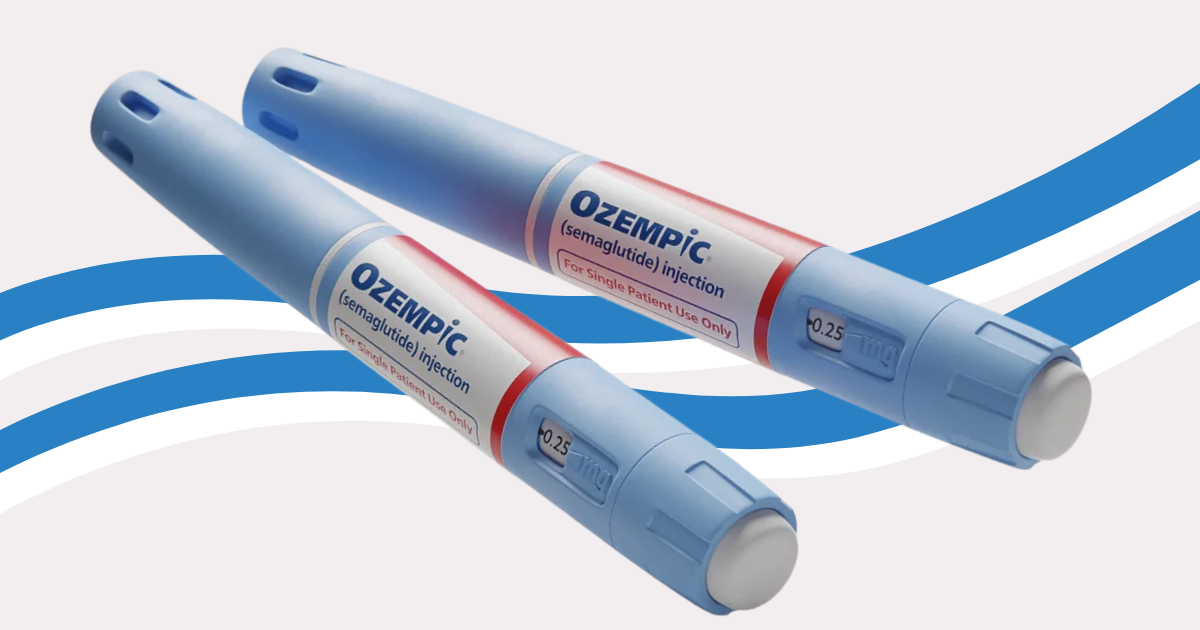In Singapore, Ozempic (semaglutide) may be legally prescribed for weight loss under its off-label use policy, provided a doctor deems it beneficial and safe for the patient.
In this article, we share more about Ozempic:
- How Ozempic work for weight loss;
- How to use Ozempic;
- Potential side effects; and
- Where to buy Ozempic in Singapore.
Ozempic FDA-approved Indications
Ozempic® (semaglutide) is a once-weekly injectable medication that is FDA-approved to help:
- people with type 2 diabetes manage their blood sugar
- lowers the risk of major cardiovascular events such as heart attack and stroke in people with established heart disease
- reduce the risk of worsening kidney disease and cardiovascular death in adults with type 2 diabetes and chronic kidney disease
How Does Ozempic Work for Weight Loss?
Ozempic is part of a group of medicines called GLP-1 medications. They copy the action of a natural hormone (GLP-1) that our body releases after eating. This hormone helps control blood sugar, reduces appetite, and slows digestion. By activating GLP-1 receptors in the body, Ozempic can help manage diabetes and also support weight loss.
Let’s break down how it helps with weight management:
1. Helping You Feel Full
Ozempic slows down food leaving your stomach helping you feel full sooner during meals and stay satisfied for longer.
2. Reducing Hunger Signals
Our gut and brain constantly “talk” to each other about when we’re hungry or full. Ozempic activates GLP-1 receptors in the brain, which can lower appetite and quiet constant food thoughts (sometimes called “food noise”).
3. Improving Insulin Response
For people with diabetes or weight issues, the body may not respond well to insulin, the hormone that moves sugar into cells for energy. This is called insulin resistance. Ozempic helps the pancreas release more insulin, which lowers blood sugar and improves how the body uses sugar. This can reduce fat storage and support weight loss.
How To Use Ozempic
Check the medicine
- Look through the pen window. Ensure Ozempic® medicine in your pen is clear and colorless.
Attach a new needle
- Take a new needle and remove the paper tab.
- Push and twist the needle onto the pen until it’s tight.
- The needle has two caps — remove both before use.
Check the flow (only the first time you use a new pen)
- Turn the dose dial until you see the flow check symbol (••).
- Press and hold the button until the counter shows “0”.
- A small drop should appear at the needle tip — this means the pen is ready.
Inject your dose
- Turn the dose dial to your prescribed amount (0.25 mg, 0.5 mg, or 1 mg).
- Insert the needle into your skin (abdomen, thigh, or upper arm) — not into muscle or vein. Change the injection site each time (rotate spots within the same area if needed).
- Press and hold the button until the counter shows “0”.
- Keep holding and count slowly to 6 before removing the needle.
After the injection
- Carefully remove and dispose needle.
- Put the cap back on the pen to keep it clean and protected.
What To Do When You Missed A Dose?
- If you miss a dose of Ozempic®, take the missed dose as soon as possible within 5 days after the missed dose
- If more than 5 days have passed, skip the missed dose and take your next dose on your regularly scheduled day
How To Store Ozempic
| Storage Conditions | |
| New, unused Ozempic pens | Store in the refrigerator between 2°C to 8°C. Do not freeze. |
| Used Ozempic pens | Store at room temperature between 15°C to 30°C or in the refrigerator between 2°C to 8°C. Do not freeze. Discard after 56 days/8 weeks. |
When stored in the refrigerator, do not store Ozempic pens directly next to the cooling element.
Potential Common Side Effects of Ozempic And Tips To Manage
When starting Ozempic® or increasing your dose, you may notice some mild stomach-related side effects. These can include:
- Nausea
- Vomiting
- Abdominal pain
- Constipation
- Diarrhea
These effects are usually temporary and often improve as your body adjusts. Here are some tips that may help:
- Follow your provider’s dose escalation schedule. Common side effects tend to be most intense when a person first starts Ozempic or when they move up to the next dose strength. Starting at higher doses or jumping dose strengths can increase your risk for more severe side effects.
- Stay hydrated. GI side effects like diarrhea can lead to dehydration. Drinking enough water throughout the day helps prevent dehydration.
- Eat smaller, more frequent meals that are bland and low in fat. This may help mitigate nausea and other GI discomfort as your body adjusts.
- Ask your doctor about anti-nausea meds. Your provider may recommend a prescription or over-the-counter medication to help with nausea and vomiting.
Where to buy Ozempic in Singapore
Ozempic, like other GLP-1 medications, is available only by prescription. To obtain it, you must consult a doctor to determine your eligibility for the treatment.
At Siena, our doctors are best equipped with the knowledge to determine if and which weight loss medication is best suited for you. Connect with one of our doctors via an online video consultation and if prescribed, we deliver your treatment plan right to you in a discreet packaging.


